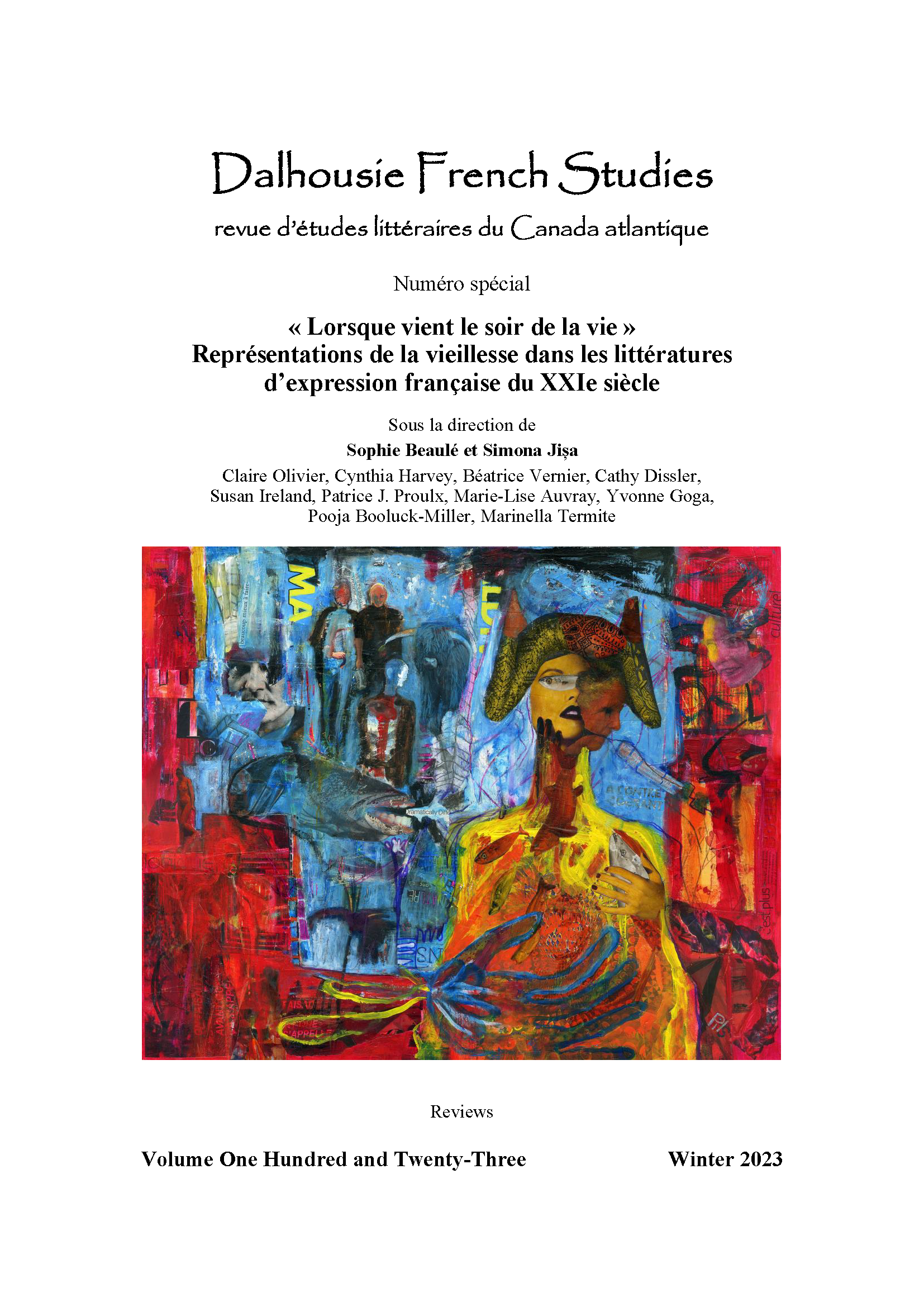“Countering Ageism in Nancy Huston’s Dolce agonia and Michèle Ouimet’s L’heure mauve”
Abstract
In her 2017 study of the nefarious effects of ageism, Margaret Morganroth Gullette brings to light the fact that marginalization is one of its most disturbing consequences, positing that, in comparison with racism, sexism, and homophobia, “ageism is the least censured, the most acceptable and unnoticed of the cruel prejudices” (xiii). Women in particular have been adversely affected by the disparaging notions that have resulted from the intersections of aging and gender. As early as 1972, Susan Sontag pointed to the “double standard about aging that denounces women with special severity” (31), while in 2013 Elaine Showalter affirmed, “It’s not easy to come out as an old person, especially as an old woman” (xi). Since the emergence of the field of Age Studies in the 1990s, however, a growing corpus of academic analyses and of fictional and auto/biographical works has begun to contest the ageist assumptions which demean the elderly. Nancy Huston’s Dolce Agonia and Michèle Ouimet’s L’heure mauve, which exemplify this trend, foreground diverse responses to the experience of aging, ill health, and loss. The polyphonic structure of these novels creates a multifaceted dialogue on important topics related to the process of aging and both take up Lynne Segal’s challenge to us all to “think again, think more imaginatively, about ageing” (2).


